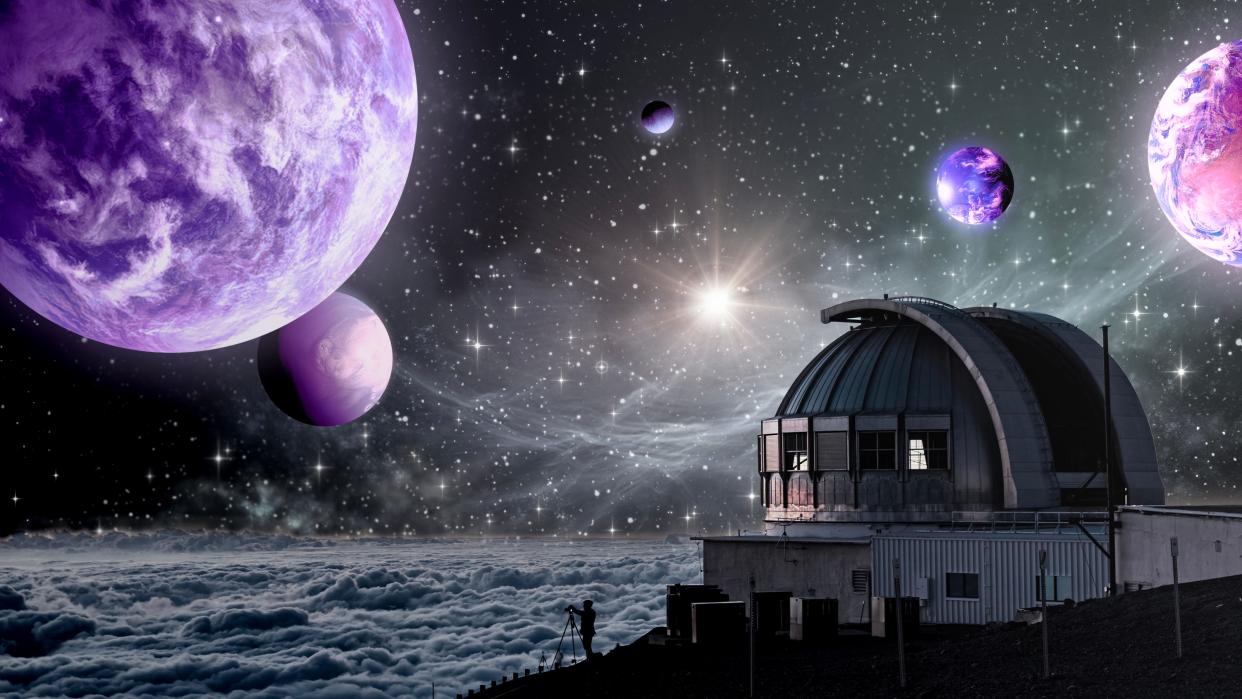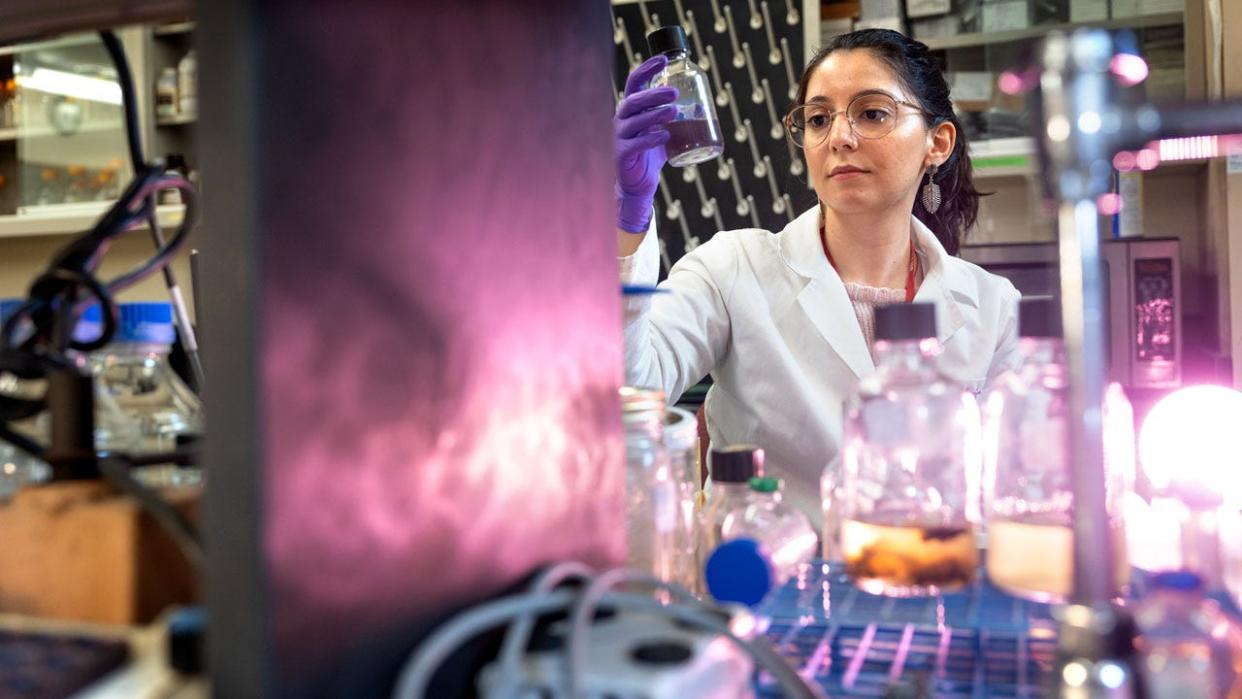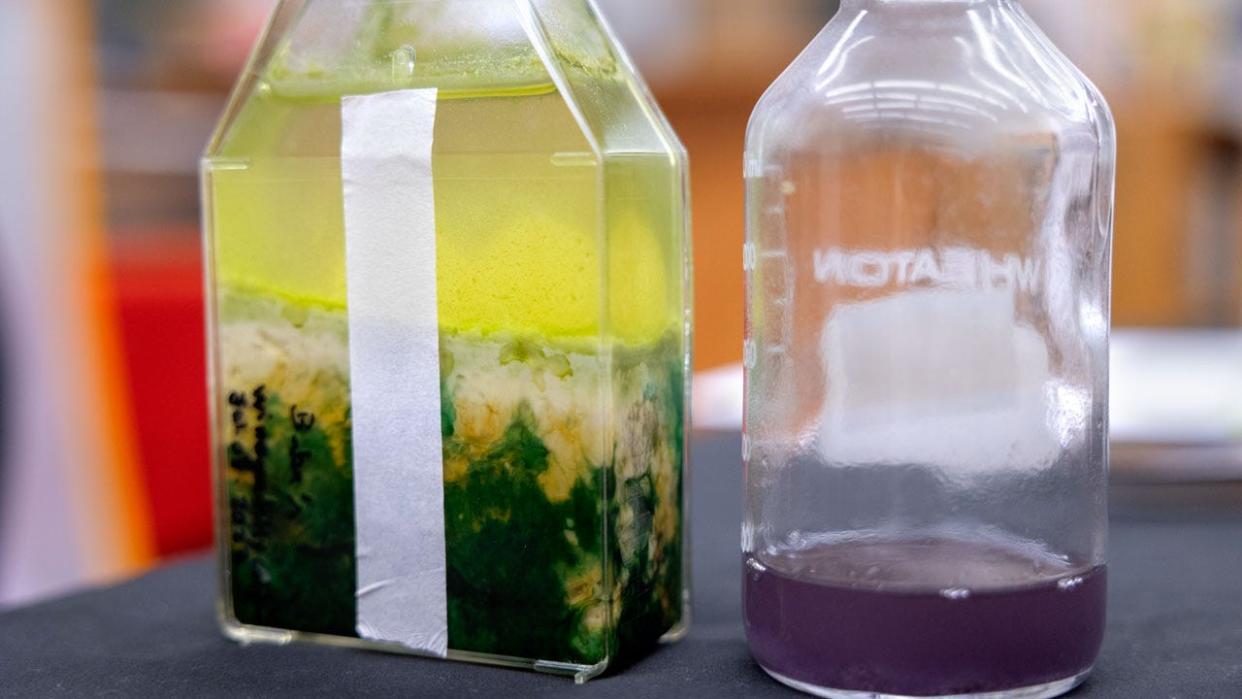Forget green: Purple may be key to finding planets capable of hosting alien life, study says
To observers from outer space, Earth's vast oceans and verdant landmasses make it appear as a blue world punctuated by green ecosystems.
It's the only habitable world we humans have ever known, so of course it's understandable for us to assume that the conditions that allow us to survive would be the standard for other life-sustaining planets. But it's far more likely for astronomers combing the cosmos for signs of extraterrestrial life to eventually stumble upon a habitable planet that scarcely resembles Earth.
While fields, forests and jungles have made green the color most associated with surface life on Earth, that may not be the case for other planets, according to a new study from researchers at Cornell University's Carl Sagan Institute. In fact, the astrobiologists who authored the report contend that it's not ludicrous to think that another habitable planet could be, say, purple.
How is that possible? Researchers say that our own planet could paradoxically offer vital clues as to how a world covered in bacteria that receive little or no visible light and oxygen could retain a purple hue.
"We think about green plants and then blue oceans and then another pale blue dot," Lisa Kaltenegger, a Cornell University astronomer and director of the Carl Sagan Institute named for the famed astronomer, said in a video shared by the university. "But when you go deeper and look at the incredible diversity of life on our planet, there are so many different organisms that could dominate another world."

Astronomical discovery: European astronomers discover Milky Way's largest stellar-mass black hole
Searching for signs of life on exoplanets
Along with organizations like the Search for Extraterrestrial Intelligence (SETI) Institute, the Carl Sagan Institute is among the rare groups fully focused on exploring the cosmos for signs that we are not, in fact, alone.
To answer that question, astronomers have increasingly turned to finding and studying exoplanets, which orbit stars outside our solar system.
To date, 5,500 of these planetary bodies have been discovered. But it's rare for any to be located in the so-called habitable zone – a region were water could remain in liquid form and pool on the planet's surface – and also have conditions similar to Earth that could support life, according to institute.
Purple bacteria thrive on Earth. Why not on other planets?
Here on Earth, conditions have favored the evolution of organisms that can produce oxygen through photosynthesis, which uses the green pigment chlorophyll-a.
However, you don't have to look off-world to find purple bacteria that can thrive under a range of conditions. That fact is why the Carl Sagan Institute scientists say the color is one of the primary contenders for life that could dominate a variety of other worlds.
The team's findings were published April 16 in the journal "Monthly Notices of the Royal Astronomical Society: Letters."

Lígia Fonseca Coelho, a postdoctoral associate at the institute, lead the study by cataloging the colors and chemical signatures that a diverse range of organisms and minerals would make visible in the light reflected off an exoplanet. These samples were collected from a variety of environments, from shallow waters to deep-sea hydrothermal vents, according to the institute.
Purple bacteria specimens thrive in low-energy red or infrared light using a simpler method of photosynthesis that doesn't make oxygen, Coelho said. Likely prevalent on Earth well before the advent of plant-type photosynthesis, such bacteria could be primed to thrive on planets that circle cooler red dwarf stars – the most common type in our galaxy.
“They already thrive here in certain niches,” Coelho said in a statement. “Just imagine if they were not competing with green plants, algae and bacteria: A red sun could give them the most favorable conditions for photosynthesis.”
Telescopes could detect purple planets
If purple worlds indeed exist, the researchers argued that they would produce a distinctive light signature that our ground and space-based telescopes could detect.

"If purple bacteria are thriving on the surface of a frozen Earth, an ocean world, a snowball Earth or a modern Earth orbiting a cooler star,” Coelho said, “we now have the tools to search for them."
Coelho and the team of researchers hope to create a database for signs of life to ensure telescopes don’t miss life if it happens not to look exactly like what we encounter around us every day. Finding one purple planet abundant with similar biology to the purple bacteria on Earth would suggest the existence of more Kaltenegger argued.
"We don't want to miss signs of life just because we are too narrow-minded and focus on just what we see in our backyard," Kaltenegger said. "Purple bacteria can survive and thrive under such a variety of conditions that it is easy to imagine that on many different worlds, purple may just be the new green.”
Eric Lagatta covers breaking and trending news for USA TODAY. Reach him at elagatta@gannett.com
This article originally appeared on USA TODAY: Purple planets could be signs of alien life, researchers say
